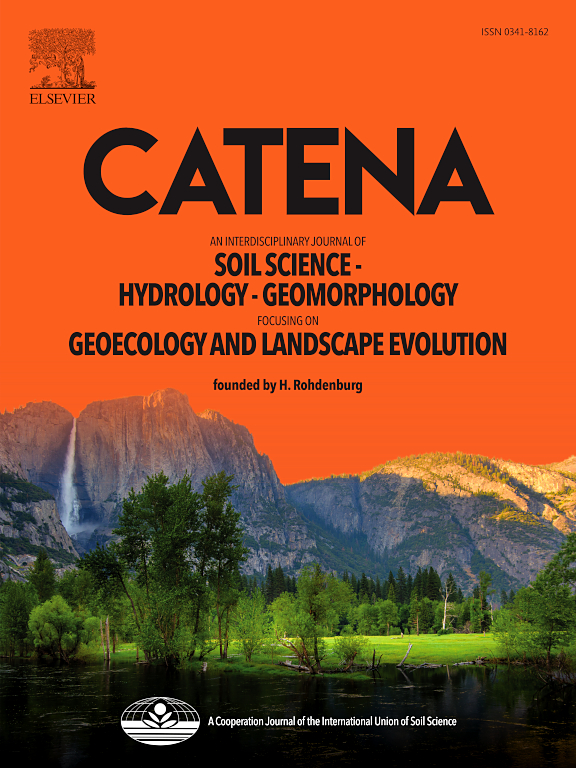Mapping of Hulun Buir steppe topsoil bulk density based on different sets of predictors
IF 5.4
1区 农林科学
Q1 GEOSCIENCES, MULTIDISCIPLINARY
引用次数: 0
Abstract
Climate change and human activities have contributed to extensive grassland loss worldwide. Soil bulk density is a critical indicator of grassland ecosystem health, and understanding the spatial distribution patterns of its changes is essential for mitigating further grassland degradation. Using distinct types of predictors, we developed corresponding random forest models to predict topsoil bulk density in the Hulun Buir Steppe. Our analysis revealed that the combined variable model demonstrated the highest predictive performance. The key variables impacting topsoil bulk density include soil type, surface soil temperature, surface soil moisture, wind speed, water vapor pressure, and NDVI. Under the interaction of soil type with climatic factors and vegetation indices, the topsoil bulk density values remained essentially constant and low with meadow soils. In contrast, the saline meadow soil type exhibited a notable increase in topsoil bulk density, with higher values being observed. Under the interaction of other soil properties with climatic factors and vegetation indices, the topsoil bulk density tends to be higher in situations where surface soil moisture and NDVI are low, and water vapor pressure and surface soil temperature are high. The Hulun Buir Steppe’s topsoil bulk density ranges from 0.46 to 2.00 g · cm−3. The spatial distribution predicted by different predictor sets of models indicated a general trend of lower in the eastern meadow steppe area and higher in the central and western typical steppe, which were influenced by natural conditions and degradation. This study offers insights into soil property changes during grassland degradation and guidance for grassland conservation and restoration.
基于不同预测集的呼伦贝尔草原表土容重制图
气候变化和人类活动造成了世界范围内广泛的草地损失。土壤容重是草地生态系统健康状况的重要指标,了解土壤容重变化的空间分布格局对缓解草地进一步退化具有重要意义。利用不同类型的预测因子,建立了相应的随机森林模型来预测呼伦贝尔草原表土容重。我们的分析表明,组合变量模型表现出最高的预测性能。影响表层土壤容重的主要变量包括土壤类型、表层土壤温度、表层土壤湿度、风速、水汽压和NDVI。在土壤类型与气候因子和植被指数的相互作用下,表层土容重值基本保持不变,草甸土容重值较低。盐渍草甸土类型表层土容重显著增加,且容重值较高。在其他土壤性质与气候因子和植被指数的相互作用下,表层土壤湿度和NDVI较低、水汽压和表层土壤温度较高的情况下,表层土壤容重较大。呼伦贝尔草原表层土壤容重为0.46 ~ 2.00 g·cm−3。不同模型预测结果表明,受自然条件和退化的影响,典型草原东部草甸低,中部和西部典型草原高。该研究对草地退化过程中土壤性质的变化具有重要意义,对草地保护与恢复具有指导意义。
本文章由计算机程序翻译,如有差异,请以英文原文为准。
求助全文
约1分钟内获得全文
求助全文
来源期刊

Catena
环境科学-地球科学综合
CiteScore
10.50
自引率
9.70%
发文量
816
审稿时长
54 days
期刊介绍:
Catena publishes papers describing original field and laboratory investigations and reviews on geoecology and landscape evolution with emphasis on interdisciplinary aspects of soil science, hydrology and geomorphology. It aims to disseminate new knowledge and foster better understanding of the physical environment, of evolutionary sequences that have resulted in past and current landscapes, and of the natural processes that are likely to determine the fate of our terrestrial environment.
Papers within any one of the above topics are welcome provided they are of sufficiently wide interest and relevance.
 求助内容:
求助内容: 应助结果提醒方式:
应助结果提醒方式:


